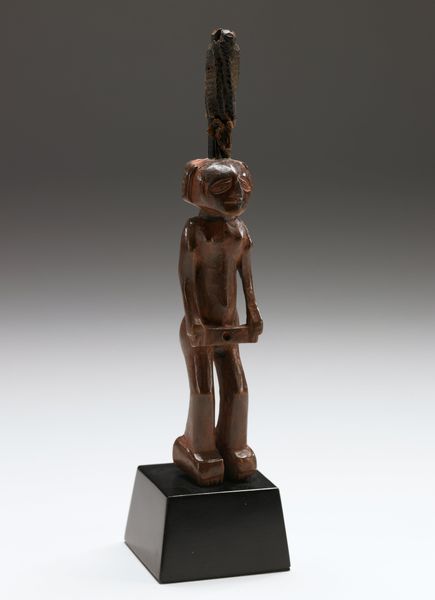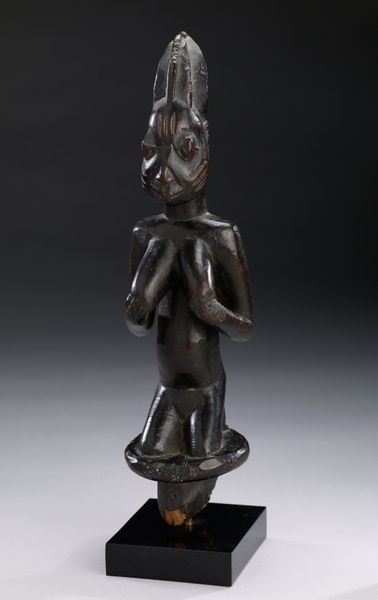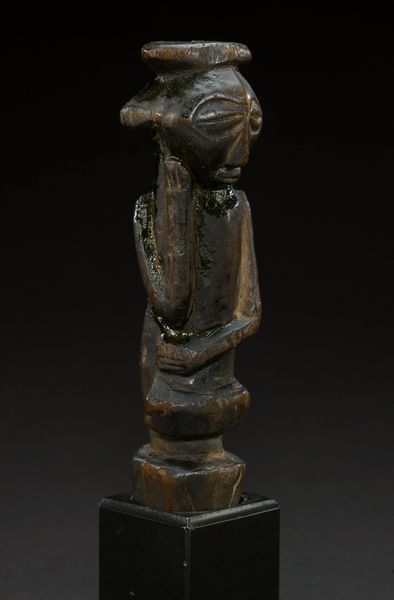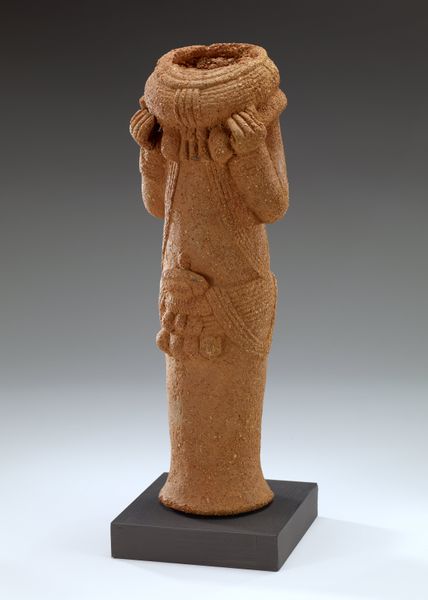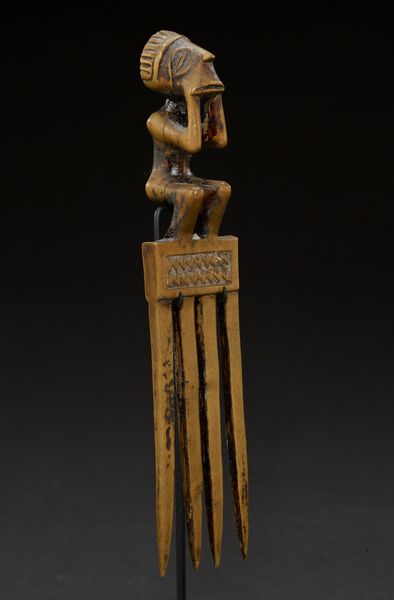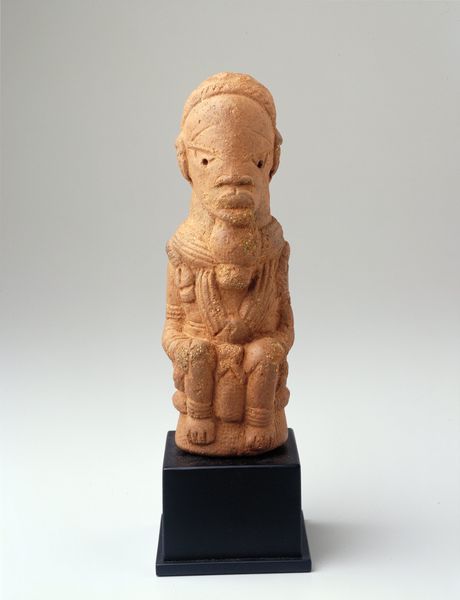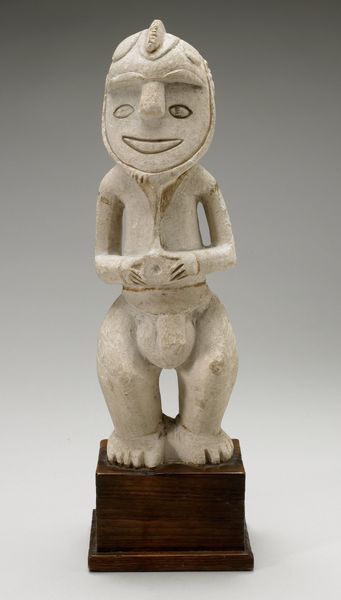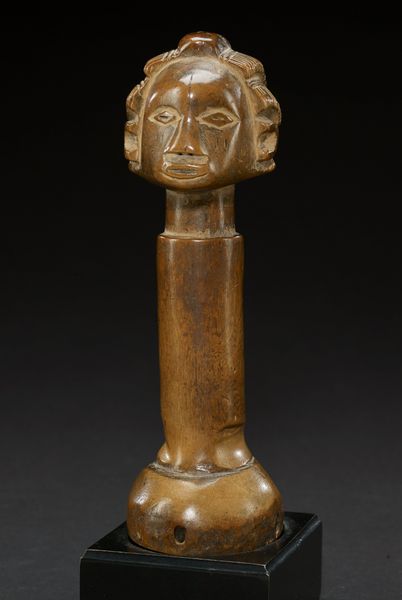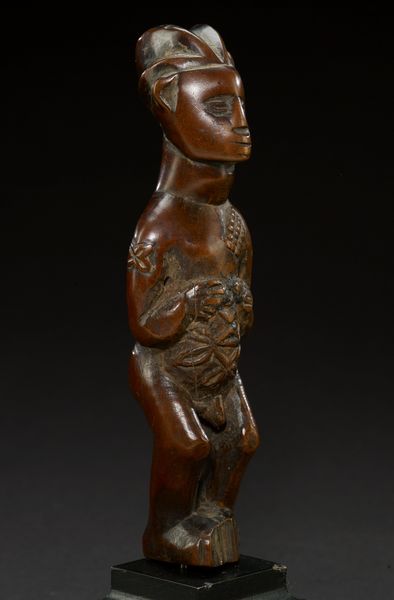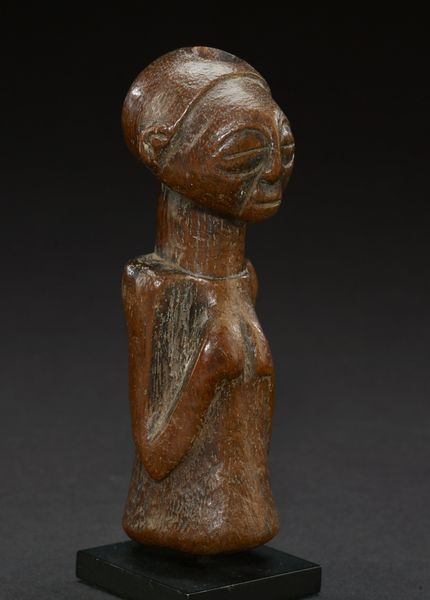
carving, sculpture, ivory
#
portrait
#
carving
#
sculpture
#
figuration
#
sculpture
#
ivory
#
miniature
Dimensions: 5 × 1 3/4 × 1 3/4 in. (12.7 × 4.45 × 4.45 cm) (with base)
Copyright: Public Domain
Curator: This exquisite object is a Luba pendant, created in the 19th century. We're lucky to have it here at the Minneapolis Institute of Art. Editor: It's striking! A warm ivory tone and very tactile. I am curious about the carving marks and how they reflect labor involved. It gives an impression of controlled exuberance. Curator: It is remarkable, especially when you consider the material and its potential for delicate work. The Luba people of the Democratic Republic of Congo valued ivory greatly, and this carving likely represented an important figure or ancestor. This also was certainly commissioned by someone of some influence or standing in the society, which makes me wonder how such power structures shaped these visual forms. Editor: Indeed, seeing the craftsmanship close up, you recognize the precision needed to realize the image with such minimal tooling and available material. Ivory as resource shaped material possibilities but, who controlled it, how far did the ivory travel? And how does that resource use relate back to the maker's status? Curator: Absolutely! These pendants played an important role in Luba society. It would have been worn as a signifier of status or affiliation. The imagery of ancestors played an important role in leadership regalia too, which helps give context to the politics of the image here. Editor: You can also tell there's a narrative being woven through the minimal details incised into the material. Perhaps it even functioned as a reminder to those in proximity to its carrier, which then goes back to our idea of accessibility to such skilled trades. Curator: The face on this piece is really compelling. It’s got a gentle yet striking characterization. And, the way it has survived tells us not only about Luba artistic traditions, but also about the collecting practices and aesthetic values in Western museums. How do these institutions shape public understandings? Editor: Right. So many factors converge here. We have artistic expression interwoven with systems of power, material scarcity influencing technique, cultural exchange—or perhaps extraction, reflected in where it ultimately rests for viewing here. The whole object is a powerful intersection. Curator: Definitely. Looking at it with an eye toward understanding its history opens up layers of meaning far beyond just the surface beauty of the object itself. Editor: For me, seeing the evidence of its making alongside an awareness of its movement from its place of origin to where it is exhibited today is something worth contemplating.
Comments
No comments
Be the first to comment and join the conversation on the ultimate creative platform.
